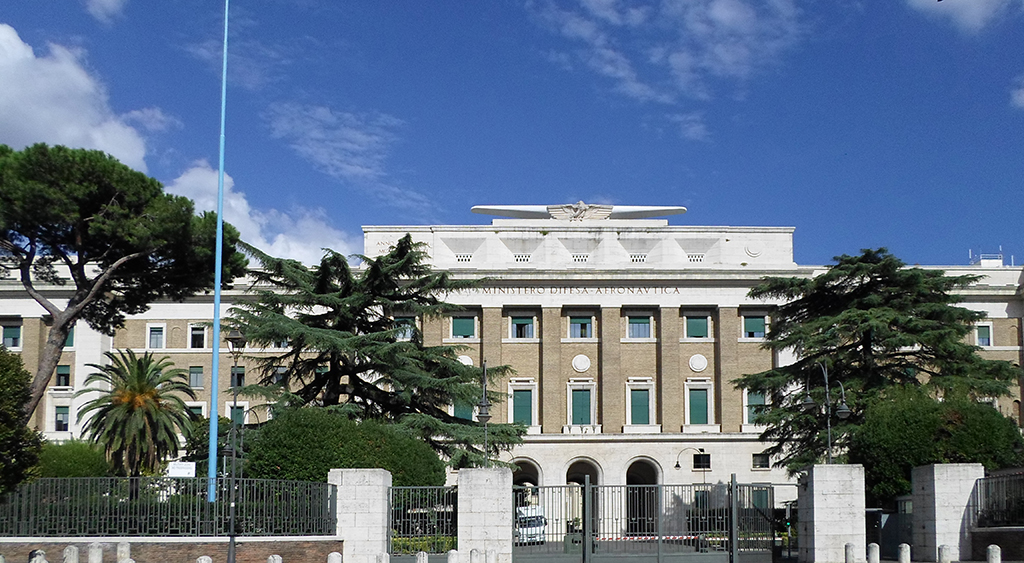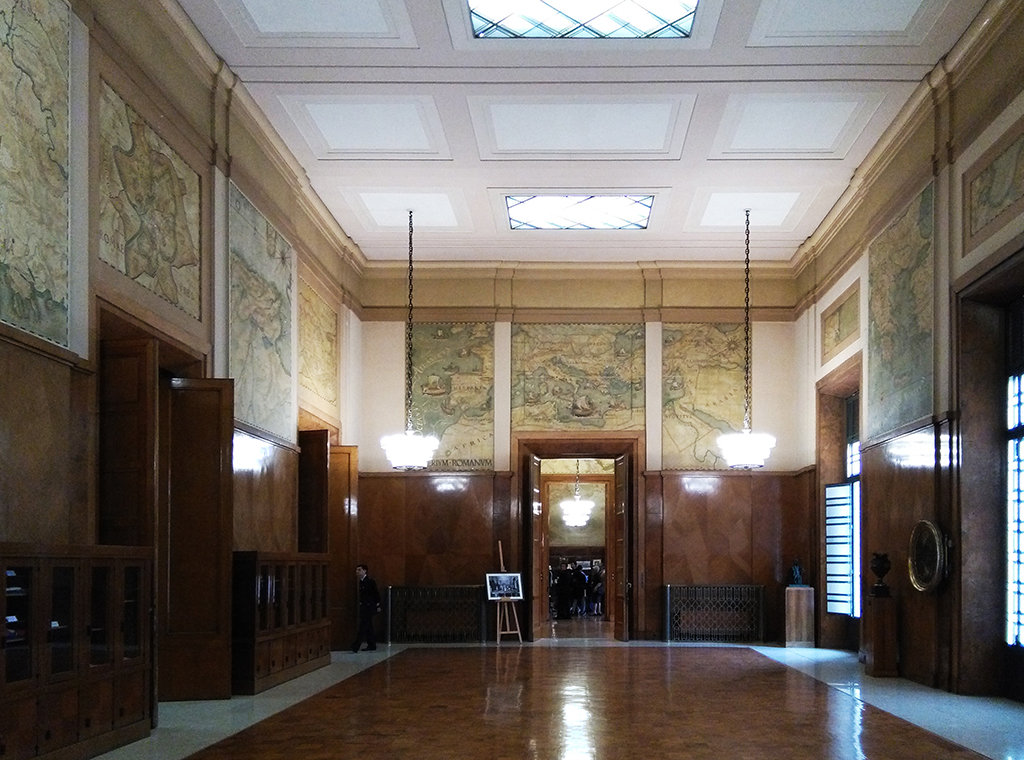
the monumental main facace of the Aeronautica Palace , Rome – photo by S. Di Guardo
IL PALAZZO DELL’AERONAUTICA: UN’ARCHITETTURA PER L’AVIATORE
di Angelo Caruso
All’interno del vasto panorama dei palazzi storici romani, merita attenzione uno dei casi più emblematici legati all’architettura di Regime, il Palazzo dell’Aeronautica, edificio che vale la pena visitare per via di numerosi aspetti interessanti legati allo stile, prettamente funzionalista, alle scelte decorative, agli aspetti tecnologici.
L’edificazione del palazzo nacque dall’esigenza di dotare di una sede stabile la neonata istituzione dell’Aeronautica Militare così come Marina Militare ed Esercito, già dotate di una sede . Italo Balbo – famoso aviatore e ministro della Regia Aeronautica dal 1929 al 1933 – fu il principale promotore dell’iniziativa di costruzione e altresì ispiratore dell’allestimento interno e delle caratteristiche tecniche, mentre l’architetto convocato per l’occasione fu il giovane Roberto Marino.
Tutto il complesso, di forma rettangolare con tre corti interne, si basa su una rigida idea di efficienza che si ritrova dalla progettazione alla realizzazione, dalla decorazione all’arredamento.
L’edificio doveva presentarsi esternamente austero e grandioso ed essere di grande solidità. Ne risultò un edificio di grande impatto volumetrico, che sorprende ancora oggi nonostante il tessuto limitrofo si sia saturato col passare dei decenni.

The meeting room – photo by S. Di Guardo
The AERONAUTICA PALACE :
A BUILDING FOR THE AVIATOR
translations: A. Caruso
Inside the vast scope of the roman historical buildings, one of the most emblematic, linked to the architecture of the period of Fascist dictatorship, the Palace of the Air Force, is worthy of visit because of many interesting aspects of style, which is purely functionalist, decorative choices and technological aspects.
The construction of the palace was born from the need to provide a stable home to the newly established Military Air Force, as well as Military Navy and Army, already equipped with a seat. Italo Balbo – famous aviator and director of the Aeronautics Director from 1929 to 1933 – was the main promoter of the construction initiative and also inspired by the interior design and technical features, while the architect convened for the occasion was the young Roberto Marino .
All of the complex, rectangular with three inner courtyards, is based on a rigid idea of efficiency that is found from design to creation, from decoration to furnishings.
The building had to be externally austere and grand and to be of great solidity. This resulted in a large volumetric building, which is still surprising despite the fact that the surrounding fabric has saturated over the decades.
